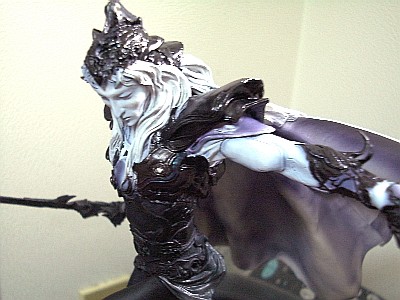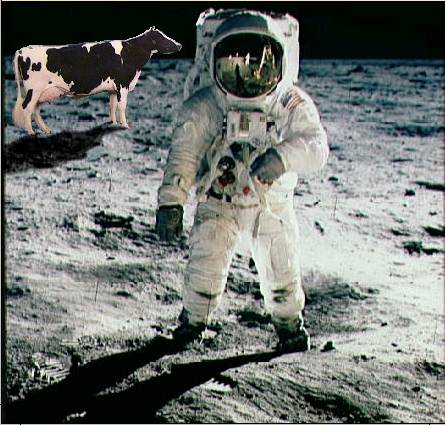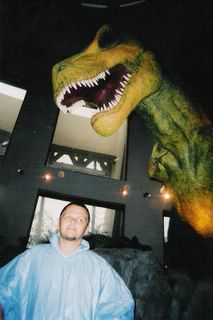FX-1
Robots May Allow Surgery in Space
from The Associated Press
OMAHA, Neb. - Small robots designed by University of Nebraska researchers may allow doctors on Earth to help perform surgery on patients in space.
robots designed by University of Nebraska researchers may allow doctors on Earth to help perform surgery on patients in space.
The tiny, wheeled robots, which are about 3 inches tall and as wide as a lipstick case, can be slipped into small incisions and computer-controlled by surgeons in different locations.
Some robots are equipped with cameras and lights and can send back images to surgeons. Others have surgical tools attached that can be controlled remotely.
"We think this is going to replace open surgery," Dr. Dmitry Oleynikov said at a Wednesday news conference. Oleynikov is a specialist in minimally invasive and computer-assisted surgery at the University of Nebraska Medical Center in Omaha.
Officials hope that next spring, NASA will teach astronauts to use the robots so that surgeries could one day be performed in space. On battlefields, the robots could enable surgeons in other places to work on injured soldiers on the front line, said Shane Farritor, a university engineering professor who helped design them.
the robots could enable surgeons in other places to work on injured soldiers on the front line, said Shane Farritor, a university engineering professor who helped design them.
The camera-carrying robots can provide views of affected areas and the ones with surgical tools will be able to maneuver inside the body in ways surgeons' hands can't, Oleynikov said. The views from the camera-carrying robots are better than the naked eye, Oleynikov said, because they send back color images that are magnified.
"We think with robot assist, we can do better than human hands," he said.
A robot capable of doing biopsies is in the works and another is being designed that can be inserted into a person's stomach via the esophagus.
The robots themselves currently cost about $200 each, Farritor said. Initial plans call for each robot to be used once and then disposed of.
Eventually, Oleynikov said, the tiny robots may enable surgeons to work without ever placing their hands in patients' bodies.
"That's the goal."
from The Associated Press
OMAHA, Neb. - Small
 robots designed by University of Nebraska researchers may allow doctors on Earth to help perform surgery on patients in space.
robots designed by University of Nebraska researchers may allow doctors on Earth to help perform surgery on patients in space. The tiny, wheeled robots, which are about 3 inches tall and as wide as a lipstick case, can be slipped into small incisions and computer-controlled by surgeons in different locations.
Some robots are equipped with cameras and lights and can send back images to surgeons. Others have surgical tools attached that can be controlled remotely.
"We think this is going to replace open surgery," Dr. Dmitry Oleynikov said at a Wednesday news conference. Oleynikov is a specialist in minimally invasive and computer-assisted surgery at the University of Nebraska Medical Center in Omaha.
Officials hope that next spring, NASA will teach astronauts to use the robots so that surgeries could one day be performed in space. On battlefields,
 the robots could enable surgeons in other places to work on injured soldiers on the front line, said Shane Farritor, a university engineering professor who helped design them.
the robots could enable surgeons in other places to work on injured soldiers on the front line, said Shane Farritor, a university engineering professor who helped design them.The camera-carrying robots can provide views of affected areas and the ones with surgical tools will be able to maneuver inside the body in ways surgeons' hands can't, Oleynikov said. The views from the camera-carrying robots are better than the naked eye, Oleynikov said, because they send back color images that are magnified.
"We think with robot assist, we can do better than human hands," he said.
A robot capable of doing biopsies is in the works and another is being designed that can be inserted into a person's stomach via the esophagus.
The robots themselves currently cost about $200 each, Farritor said. Initial plans call for each robot to be used once and then disposed of.
Eventually, Oleynikov said, the tiny robots may enable surgeons to work without ever placing their hands in patients' bodies.
"That's the goal."







 what the Great Conjunction is. 'What's the Great Conjunction?'
what the Great Conjunction is. 'What's the Great Conjunction?' 




 A Is for Androids
A Is for Androids B Is for Boba
B Is for Boba C Is for Calvin
C Is for Calvin D Is for Dragons
D Is for Dragons E Is for Elric
E Is for Elric F Is for Futures
F Is for Futures G Is for Genie
G Is for Genie H Is for Hobbits
H Is for Hobbits I Is for Iceman
I Is for Iceman J Is for Jedi
J Is for Jedi K Is for Kraken
K Is for Kraken





































































0 Comments:
Post a Comment
<< Home